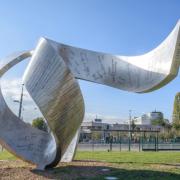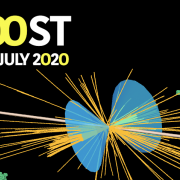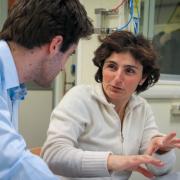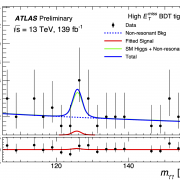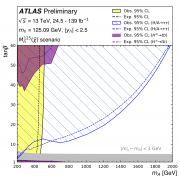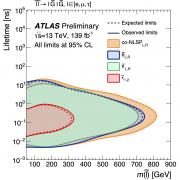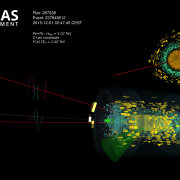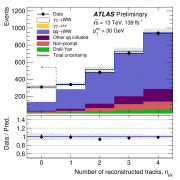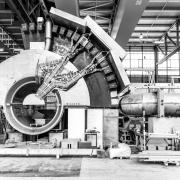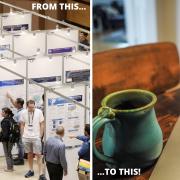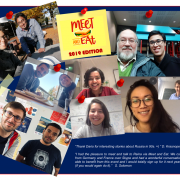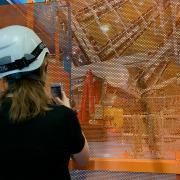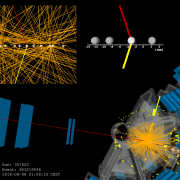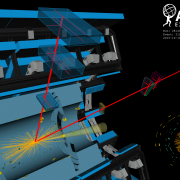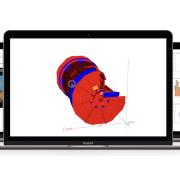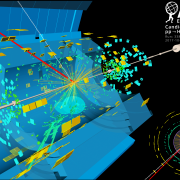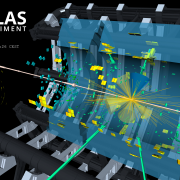Access to Collaboration Site and Physics Results
Updates tagged: “Physics Results”
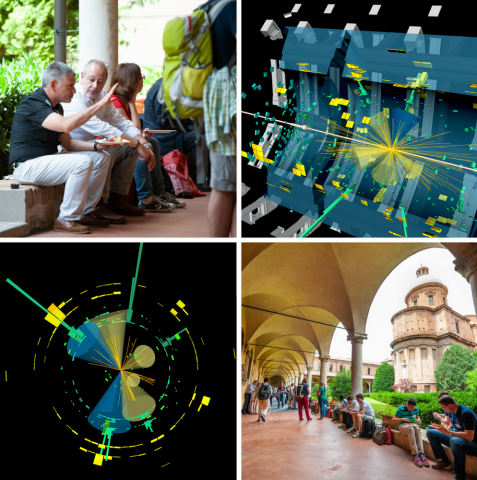
Highlights from LHCP2018
Physicists from around the globe assembled this week at the Centre Domenico in Bologna, Italy, the site of Europe’s oldest university, to attend the sixth annual conference on Large Hadron Collider Physics (LHCP2018). The 425 participants enjoyed picturesque architecture, world-renowned cuisine, and a full menu of recent physics results from the LHC. A sample platter of a few of the tasty morsels is presented.
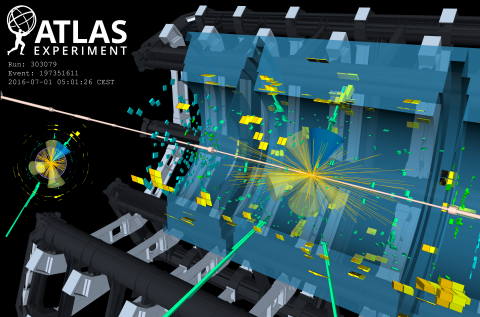
ATLAS observes direct interaction of Higgs boson with top quark
The ATLAS Collaboration at CERN has announced the observation of Higgs bosons produced together with a top-quark pair. Observing this extremely rare process is a significant milestone for the field of High-Energy Physics. It allows physicists to test critical parameters of the Higgs mechanism in the Standard Model of particle physics.
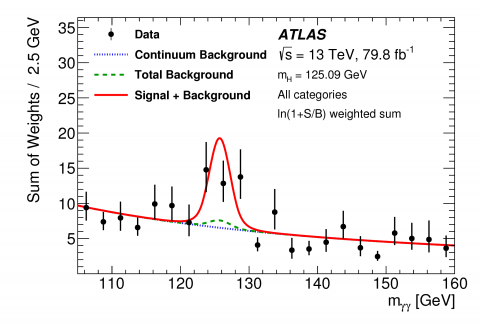
New ATLAS result establishes production of Higgs boson in association with top quarks
According to the Standard Model, quarks, charged leptons, and W and Z bosons obtain their mass through interactions with the Higgs field, whose fluctuation gives rise to the Higgs boson. To test this theory, ATLAS takes high-precision measurements of the interactions between the Higgs boson and these particles. While experiments had observed and measured the Higgs boson decaying to pairs of W or Z bosons, photons or tau leptons, the Higgs coupling to quarks had – until now – not been observed.
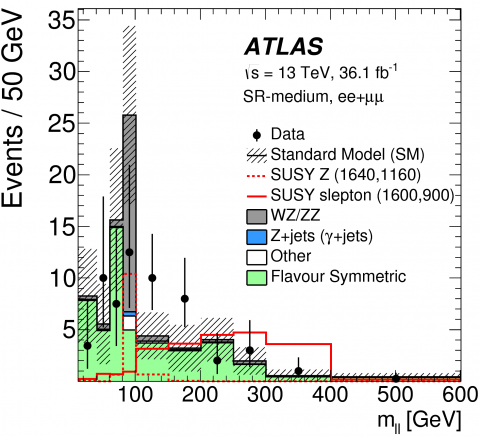
The edge of SUSY
The ATLAS experiment has just completed a new search for evidence of supersymmetry (SUSY), a theory that predicts the existence of new “super-partner” particles, with different properties from their Standard Model counterparts. This search looks for SUSY particles decaying to produce two leptons and scrutinises the invariant mass distribution of these leptons, hoping to find a bump.
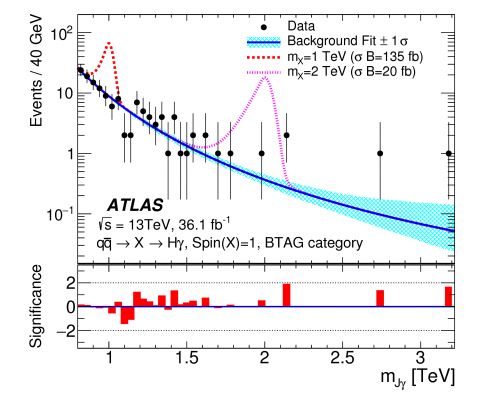
Searching for forces beyond the Standard Model
The ATLAS collaboration is continuing to scour the wealth of data provided by the LHC for any signs of physics beyond the particles and interactions described by the Standard Model. One approach is to search for new forces in addition to the Standard Model’s electroweak and strong interactions. Such forces could be propagated by new massive bosons playing the role the W and Z bosons have in mediating the electroweak force.
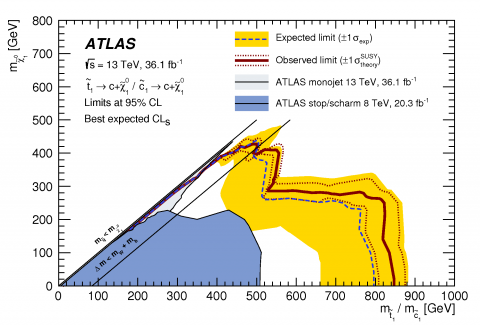
Charming SUSY: running out of places to hide
Why is gravity so much weaker than the other forces of nature? This fundamental discrepancy, known as the “hierarchy problem”, has long been a source of puzzlement. Since the discovery of a scalar particle, the Higgs boson, with a mass of 125 GeV near that of the W and Z bosons mediating the weak force, the hierarchy problem is more acute than ever.
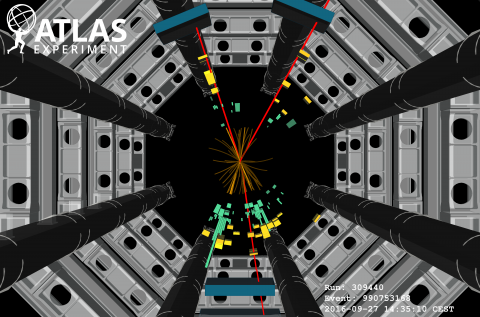
Beyond discovery: ATLAS explores the Higgs boson
The ATLAS Collaboration at CERN has released new studies of the Higgs boson using 13 TeV data collected in 2015 and 2016. The results further corroborate the Standard Model nature of the Higgs boson, and open doors to fresh searches for new physics.
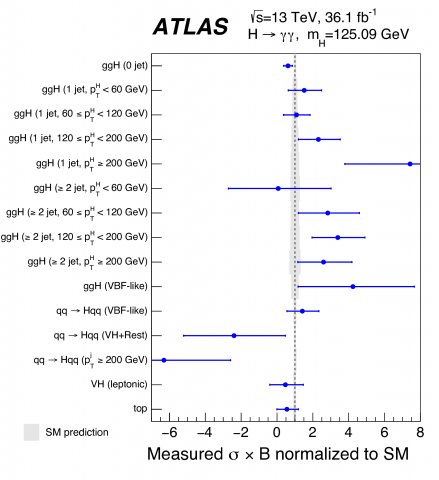
ATLAS illuminates the Higgs boson at 13 TeV
The ATLAS collaboration has released a set of comprehensive results that illuminate the properties of the Higgs boson with improved precision, using its decay into two photons with LHC collisions recorded at a centre-of-mass energy of 13 TeV.
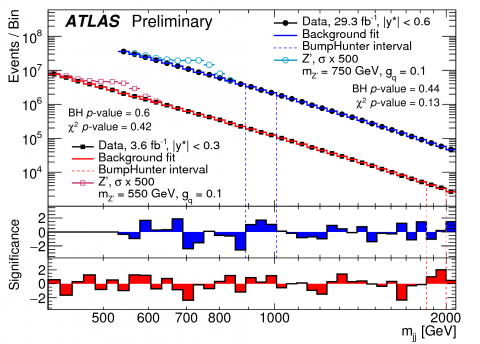
A new data-collection method for ATLAS aids in the hunt for new physics
What do you do when you produce more data than you can handle? This might seem like a strange question for experimental physicists, but it’s a problem that the ATLAS detector faces every day. While the LHC continues to produce ever-higher rates of proton collisions, the detector can only record data at a fixed rate. Therefore, tough choices must be made about what events to keep. This is not a decision made lightly – what if the thrown-away data contain some long-sought new particles beyond those of the Standard Model.
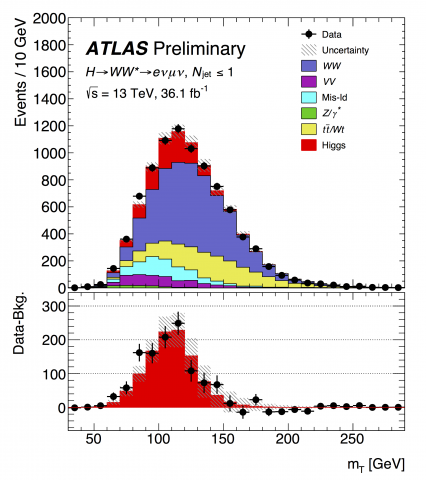
The exploration of the Higgs boson continues
Discovering the Higgs boson can be likened to finding a new continent. While a momentous event in itself, the most exciting part remains the exploration of the new land! In a new result presented today at the Rencontres de Moriond, the ATLAS collaboration examined the Higgs boson decaying into two W bosons


